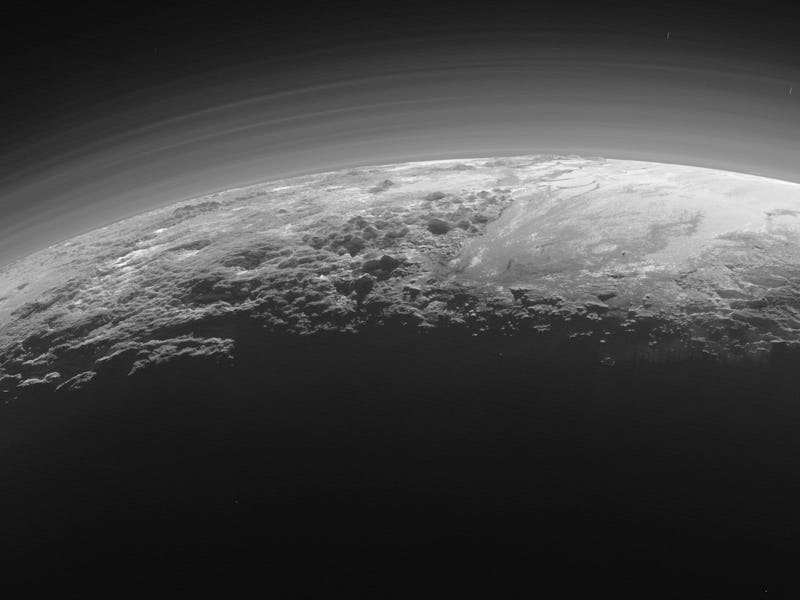NASA's New Images of Pluto Are a 'Scientific Bonanza'
These images of Pluto's surface are as cool as the dwarf planet is cold.

NASA’s New Horizons mission to Pluto continues to surprise and delight scientists and space nerds alike.
The latest photos show the curvature of the dwarf planet, backlit by a dim sun.
The images represent “a scientific bonanza, revealing new details about Pluto’s atmosphere, mountains, glaciers, and plains,” the mission’s principal investigator Alan Stern says in a statement released today.
Scientists are shocked by these images, which show an atmosphere more similar to our own than we could have predicted. “In addition to being visually stunning, these low-lying hazes hint at the weather changing from day to day on Pluto, just like it does here on Earth,” says New Horizons team leader Will Grundy.
Let’s go in for a closer look:
Pluto's surface looks surprisingly similar to Arctic landscapes here on Earth.
See the icy mountains and flat ice plains? And the layers of haze in Pluto’s thin atmosphere? The scientists guess that the dwarf planet has its own sort of hydrological cycle. Instead of consisting of frozen water like here on Earth, Pluto’s ice is likely composed of nitrogen, carbon dioxide, and methane.
Ice made of water would be very solid and brittle at temperatures of -390 Fahrenheit like those found on Pluto, but these frozen gases would form soft ices that can flow like a glacier. Which is exactly what they look like.
“We did not expect to find hints of a nitrogen-based glacial cycle on Pluto operating in the frigid conditions of the outer solar system,” says team member Alan Howard.
“Driven by dim sunlight, this would be directly comparable to the hydrological cycle that feeds ice caps on Earth, where water is evaporated from the oceans, falls as snow, and returns to the seas through glacial flow.”
It turns out that the surface of Pluto has been shaped by forces that are similar to what we know here on Earth. In retrospect, maybe that should not have come as such a surprise after all.